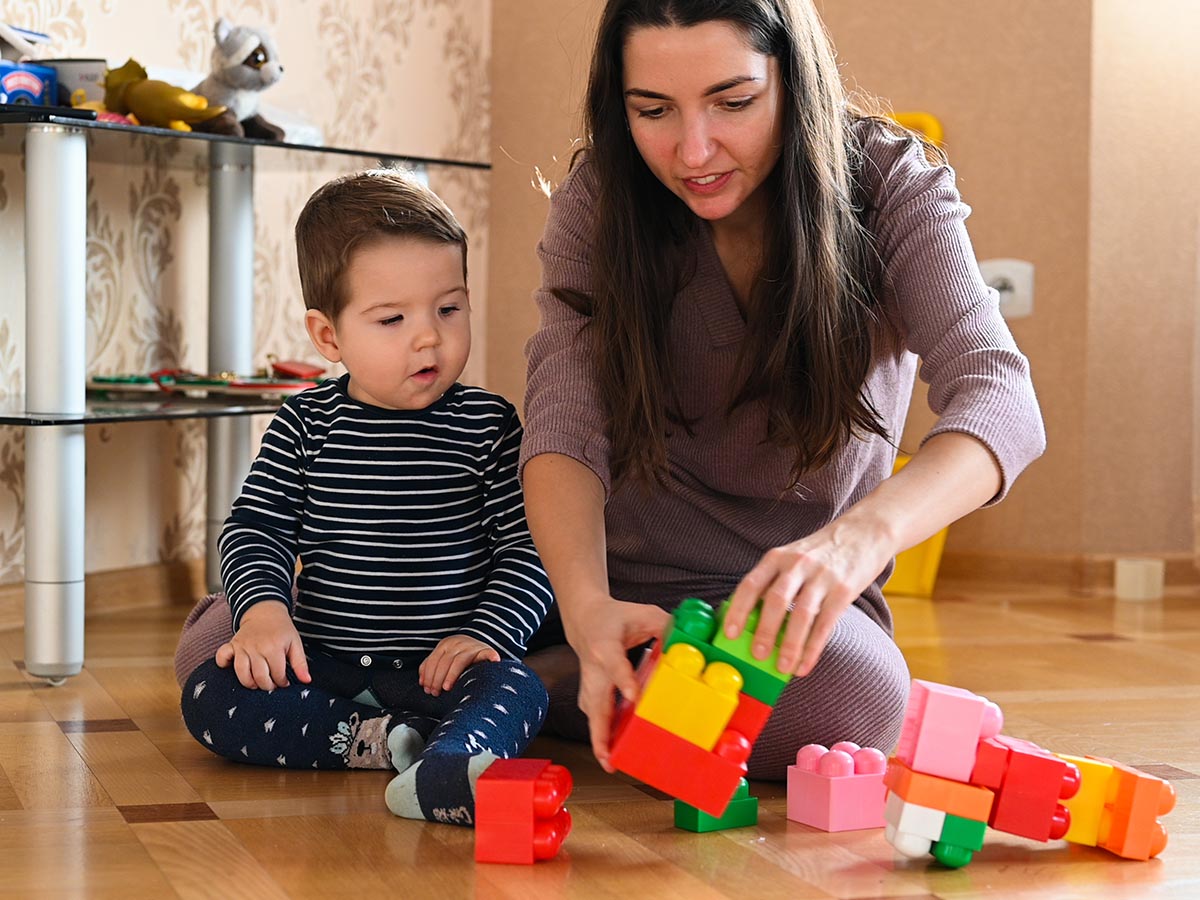Language development
2 to 4 years

Language development2-3 years
At this age, a lot is happening! Vocabulary is growing, and it becomes easier to have small conversations with children about things they are interested in. They also start putting words together into short sentences. At first, two-word phrases like “look there” or “go car,” but gradually, the sentences become longer. Around the age of three, some children can form sentences with six to seven words.
Children also understand more of what we say. As they approach three years old, they can often follow slightly longer instructions, such as “Fetch the ball that’s under the table.”
Tips! Language development varies greatly among children at this age, and that’s perfectly normal. The important thing is that we, as adults around them, provide the support they need to develop at their own pace.
Typically, children at this age simplify the pronunciation of words, sometimes to the extent that it can be difficult for outsiders to recognize which word it is. “Bottle” can become “baba” and “open” can become “ma,” for example. Even as a parent, you may not understand everything the child says, but often, showing that you are genuinely listening and trying to understand goes a long way.
Tips! If the child becomes frustrated when you don’t understand what they’re saying, try to get them to express it in other ways. Encourage them to point or use body language.
“No” and “mine” are often important words as children want to express their desires. Eventually, they start using “I” to refer to themselves. They also begin to ask more and more questions, such as “what” and “who” questions. This is great because questions are how we learn!
As an adult, you can aim to stay one step ahead of the child and consistently use slightly longer sentences than they do. For example, instead of just stating the question word, use the whole sentence: “What are we going to do at the playground?” or “Who is ringing the doorbell?”
A great way to support children in developing their language is to make it a habit to pick up on what they say and expand on it a bit. For example, if the child says “no tetta,” you can say, “No, you don’t want to wash the teddy bear.” The child receives confirmation that you understood, and you become a good model for how they can build on their language.
Tips! Building language doesn’t have to be difficult. Engage in activities the child enjoys and label them with words. Read, recite rhymes, and sing together!
Language development3-4 years
Language continues to develop significantly at this age. Vocabulary expands, and the child understands and uses more complex sentences. Children also start incorporating more language into their play. They engage in imaginative and role-playing games, and they talk and narrate what’s happening during playtime.
The child’s pronunciation gradually becomes clearer, but simplifications still occur. Two consecutive consonants can be challenging, so “soap” may become “toap,” for example, and some speech sounds may be substituted with others. However, it is now much easier for outsiders to understand what the child is saying.
Tips!
If your child mispronounces words, there’s no need to correct them. However, you can always say the words as they should sound, serving as a model for how the child can say them next time.
Sometimes, children at this age have so much to say that they stumble over their words, and it may sound like they’re stuttering. In most cases, this phase passes on its own. However, it’s essential to give the child time to express themselves without interrupting or pressuring them when their words become jumbled.
Many children at this age enjoy talking and discussing. They can talk about things they’ve seen or done and ask many questions. This is, of course, excellent for language development. When we listen to children, respond to their questions, tell stories, and explain things, we contribute to the expansion of their vocabulary and their understanding of language.
Tips!
Read children’s books together and discuss what’s happening in the story. It’s a fantastic way to build vocabulary, among other things. If the child is just beginning to learn something specific, like colors, you can often find books that focus on that topic.
At this age, children also start learning more abstract words, such as words for shapes, sizes, and colors. Their understanding of simple concepts of time also tends to increase, so they grasp words like “after,” “first,” and “tomorrow,” even if they can’t determine the exact duration, such as an hour. Children begin to count up to three, and sometimes even higher.
